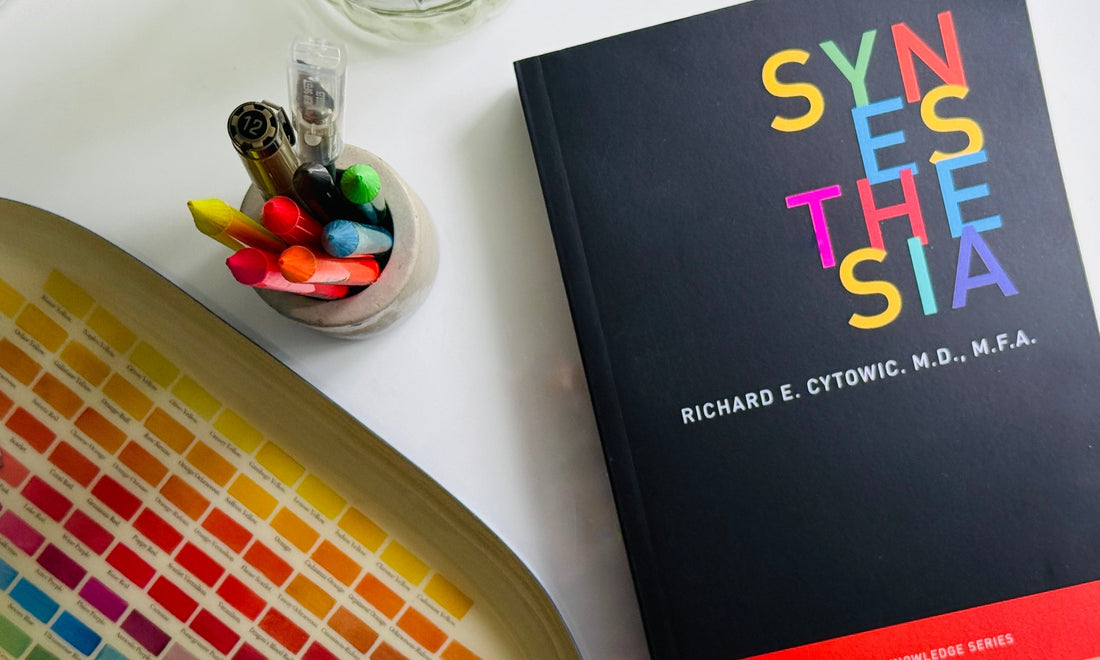
Something About You
Share
As early as third grade, I have associated Mondays with Robin’s Egg Blue, Thursdays with Marigold orange/yellow (not yellow/orange) and Fridays with brick red (not maroon). April is a silvery oyster white, August is a muted red with neutral undertones, and December is a rich, twilight bluish violet. I associate the number three as ink blue and six as pumpkin orange. The letter E is an ultramarine blue, and the letter O is white with a hint of yellow. These involuntary associations still hold true today because I have the neurological trait called synesthesia. These exact combinations and interconnections have been stable and consistent since I was around seven years old.
Synesthesia is not a disorder, but a neurological process and most people don’t know they have it until they realize that vast majority of people don’t feel and see the world this way. Approximately 1-4% of the population experience synesthesia and it is more common in women than in men (3:1). I gained clarity as so why my senses would involuntarily intercept and intermingle when I was clinically diagnosed with ADHD in midlife. I always assumed it was normal to see and feel the world this way. Synesthesia is considered a perceptual phenomenon where one of the senses is stimulated by another. I like to think of it as ‘getting some wires crossed’ where two or more senses get activated and merge when only one is supposed to. In essence, it becomes an intricate dimension of reality.
There are at least 60-150 different forms of synesthesia, some more rare than others (imagine seeing colors as you taste food or tasting a word!). I happen to have the Day-color synesthesia, Grapheme-color synesthesia and Sound-color (Chromesthesia) synesthesia subtypes. What this means is that I make very distinctive color associates for the days of the week, the months of the year, four numbers and fourteen different letters of the alphabet. This has made working with a daily calendar or planner a real struggle for me my entire life…unless I color code with distinct colors which makes this a challenge.
For me, the most gratifying part about having synesthesia is the Sound-color subtype; the ability to see color in sounds and certain musical notes. This is where I feel the benefits of living with synesthesia the most because it heavily impacts my painting in a positive way. I tend to listen to the same song repeatedly while working on a piece because there are certain colors I see in the sounds and and am driven to put them in the work. It is almost like a requirement.
In the studio, the process of mixing paint and trying to find the exact color that I see swirling in my mind sometimes proves problematic, as it can often become a borderline obsession and then I deal with sensory overload. But, if that is the worst aspect of having synesthesia, I will take it. Because I think it’s absolutely breathtaking to see colors in music.
Some famous artists with known synesthesia: Pharrell Williams, Billie Eilish, Billy Joel, Duke Ellington, Wassily Kandinsky, Vladimir Nabokov, Lady Gaga, Tori Amos, Vincent Van Gogh, David Hockney, Marina (Marina and the Diamonds), Stevie Wonder, Mary J Blige and Leonard Bernstein.
